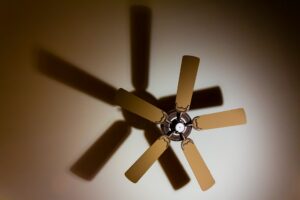Quieting the Digital Symphony: A Comprehensive Guide to Resolving Loud or Noisy Computers and Laptops

In the evolving landscape of digital orchestration, a computer or laptop emitting disruptive noise can be both distracting and disconcerting. Whether it’s the whirring of fans, the clicking of hard drives, or other mechanical hums, addressing the audible symphony within your device is crucial for a harmonious computing experience. In this extensive guide, we embark on a journey to understand the potential causes of loud or noisy computers and laptops, exploring comprehensive solutions, and discovering ways to make these digital companions operate more silently.
Understanding the Symphony of Noise: Decoding the Causes of Loud Computers
Before delving into solutions, it’s essential to understand the diverse reasons behind a computer or laptop generating excessive noise. The sources of noise can range from cooling components to mechanical parts, and identifying these factors is the first step towards achieving a quieter computing environment.
Common Causes of Loud Computers:
- Overactive Cooling Fans:
- Issue: Dust buildup, inefficient cooling, or heightened system activity can cause cooling fans to operate at higher speeds, generating excess noise.
- Solution: Clean fans, optimize cooling, and manage system processes to reduce fan workload.
- Failing or Misaligned Fans:
- Issue: Fans can become misaligned or fail over time, leading to irregular rotations and increased noise.
- Solution: Replace failing fans, realign misaligned ones, and ensure proper fan functionality.
- Hard Drive Noise:
- Issue: Mechanical hard drives may produce clicking or spinning sounds during read and write operations.
- Solution: Consider upgrading to a solid-state drive (SSD), which is inherently silent, or replace a noisy hard drive.
- Optical Drive Operations:
- Issue: CD/DVD drives can generate noise when in use, especially during high-speed operations.
- Solution: Use external optical drives when possible or consider replacing the optical drive with a quieter model.
- Power Supply Issues:
- Issue: Faulty or aging power supply units (PSUs) can produce buzzing or humming sounds.
- Solution: Replace a malfunctioning PSU with a high-quality, efficient unit.
- Graphics Card Noise:
- Issue: High-performance graphics cards may produce noise, especially during intensive tasks.
- Solution: Opt for graphics cards with advanced cooling solutions or consider aftermarket cooling options.
Comprehensive Solutions for a Quieter Symphony: A Step-by-Step Guide
**1. Optimizing Cooling Systems: Bringing Balance to Fans
- Steps:
- Clean Cooling Components: Power down the device, open the case, and carefully clean cooling fans and heat sinks to remove dust buildup.
- Manage System Temperature: Adjust system settings or use third-party software to optimize fan speed based on temperature.
**2. Fan Replacement: Aligning Rotations for Harmony
- Steps:
- Identify Faulty Fans: Use monitoring tools to identify malfunctioning or misaligned fans.
- Replace Faulty Fans: Purchase and install replacement fans compatible with the system.
**3. Upgrading to SSD: Silencing the Mechanical Choir
- Steps:
- Assess Hard Drive Noise: Determine if mechanical hard drive noise is a significant contributor.
- Upgrade to SSD: Consider upgrading to a solid-state drive for silent and faster storage.
**4. Minimizing Optical Drive Noise: Embracing External Solutions
- Steps:
- Reduce Usage: Minimize the use of internal optical drives and consider external alternatives for occasional needs.
- Upgrade Optical Drive: If replacement is necessary, opt for a quieter optical drive model.
**5. Power Supply Upgrade: Transforming the Hum into Silence
- Steps:
- Diagnose PSU Noise: Identify if the power supply unit is generating excessive noise.
- Upgrade PSU: Replace the PSU with a high-quality, quiet model to eliminate buzzing or humming.
**6. Graphics Card Considerations: Balancing Performance and Silence
- Steps:
- Evaluate Graphics Card Noise: Determine if the graphics card is a significant noise contributor.
- Opt for Quieter Models: Choose graphics cards with advanced cooling solutions or consider third-party cooling options.
Ways to Make Your Computer or Laptop More Silent: A Symphony of Silence
Beyond addressing specific causes of noise, implementing general practices can contribute to an overall quieter computing experience. Consider these additional strategies to make your computer or laptop operate more silently:
**1. Choose Silent Components:
- Opt for components designed with noise reduction in mind, such as case fans with low decibel ratings and power-efficient graphics cards.
**2. Use External Cooling Solutions:
- Employ external cooling pads or stands with built-in fans to dissipate heat and reduce the workload on internal fans.
**3. Regular Maintenance:
- Schedule routine cleaning and maintenance sessions to prevent dust buildup and ensure optimal component performance.
**4. Adjust Power Settings:
- Configure power settings to balance performance and energy efficiency, reducing the need for fans to operate at high speeds.
**5. Invest in Noise-Canceling Accessories:
- Consider noise-canceling accessories, such as external hard drives or SSDs, to minimize the impact of internal component noise.
**6. Custom Fan Curves:
- Customize fan curves using system monitoring tools to tailor fan speed to your preferences, balancing silence with effective cooling.
Proactive Measures for Sustained Silence: Cultivating a Serene Digital Environment
While the solutions provided address immediate concerns, adopting proactive measures ensures sustained silence in your computing environment. Consider the following tips for an enduring symphony of tranquility:
**1. Regular Audits:
- Conduct periodic audits of your system to identify emerging noise issues and address them promptly.
**2. Upgrade Strategically:
- When upgrading components, prioritize those known for quiet operation to build a silent computing foundation.
**3. Noise-Reducing Case:
- Invest in a case designed with noise reduction features, such as sound-dampening materials and optimized airflow.
**4. External Solutions:
- Consider using external peripherals like external hard drives or optical drives to relocate noise sources away from the main system.
**5. Noise Monitoring Tools:
- Use noise monitoring tools to identify patterns and potential noise sources, allowing for proactive intervention.
**6. User Education:
- Educate users about the impact of certain activities on system noise, promoting responsible and noise-conscious computing habits.
Conclusion: Crafting a Silent Digital Overture
In conclusion, addressing the noise emanating from your computer or laptop demands a thoughtful and systematic approach. By understanding the potential causes, implementing the comprehensive set of solutions, and embracing proactive measures, you can craft a silent digital overture that enhances your computing experience.
Remember that each system is unique, and some solutions may need to be adapted based on specific hardware configurations and user preferences. By combining technical know-how with a commitment to cultivating a serene digital environment, you can enjoy the symphony of silence in the dynamic landscape of computing.




